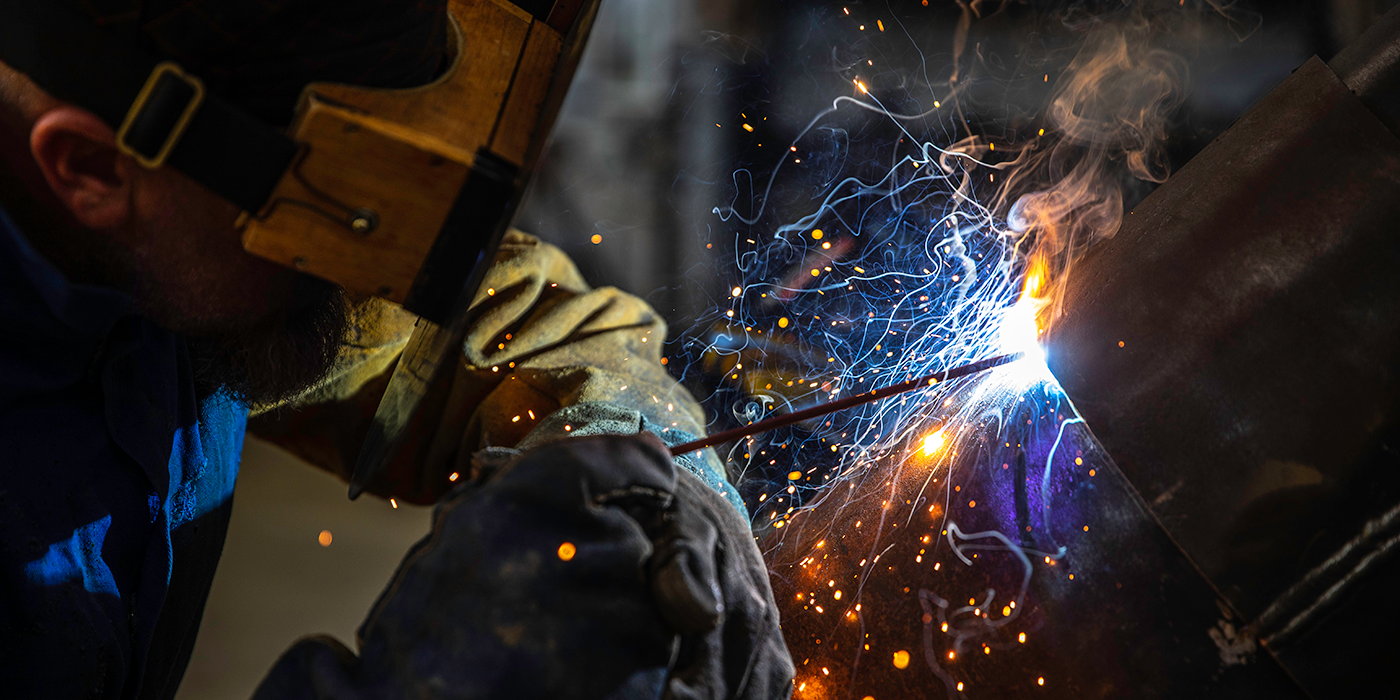Natural Gas Welding

Natural Gas Welding
Pipe welding is considered one of the more difficult processes for welders to master, and our Natural Gas Department now has seven employees qualified to perform in-service pipe welding.
Natural gas travels to our customers through 12-inch and 6-inch transmission lines that bring gas in from Piedmont Natural Gas (PNG), our supplier. The point at which the gas comes into GUC’s system is called a gate station, and we operate five. Gate stations regulate gas pressure from as high as 740 psi (pounds per square inch) down to 60 psi for delivery to customers’ homes. In 2015, we added a high-pressure distribution main that operates at 255 psi and delivers natural gas to two regulator stations along the Northwest Bypass.
The Gas Department has had qualified welders for more than 30 years; however, with the addition of the gate stations and high-pressure distribution main, our facilities had outpaced our welding procedures. In 2020 new procedures were written and adopted into the Gas Department’s Operations & Maintenance Plan.
In addition, to keep up with federal regulations, it was necessary to certify our welders to American Petroleum Institute (API) 1104 Standard. To become a qualified welder for GUC, an employee must complete a certification course at a community college, complete GUC-issued computer-based training and testing, and complete the certification process as listed below.
Certification Process
Certification tests for gas pipe welding are particularly rigorous due to the high pressure of gas flowing through the mains. Once an employee receives a certificate, they must go through testing every six months to keep the certification for high-stress and annually for low-stress.
High-stress test certifications involve the following three testing scenarios:
- 12-inch Butt test weld at 6G angle
- 12-inch Sleeve weld at 6G angle (with eight special “coupon” cuts that all must pass)
- 12-inch Branch tee
Butt welds are done by placing two pieces of metal end-to-end on the same plane and then welding along the joint. Sleeve welds place pipe over pipe to simulate welding joints of pipe together. Certification in low-stress test requires the butt weld only.
A 6G angle weld means that one pipe needs to position at a 45-degree angle to another pipe. This is one of the most complex and challenging positions for welders. The branch tee test is to qualify the welder to weld in any position.
Once certified in high-stress, the recertification only includes the 12-inch butt weld at 6G angle. If the tester fails this scenario, they must go through all three testing scenarios to become certified again.
To aid in the testing process, our Gas Department has an in-house testing rig in the Gas Shop. Once the welds are complete, they are sent to First Cut in South Carolina where they go through a destructive testing inspection to determine if the weld will break.
Gas employees Chris Rouse, Butch Mills, Paul Bunch, Tony Richards, and Ramsey Covington are all certified on high-stress test and Stephen Roebuck and Justin Oakes is certified on low-stress test.
